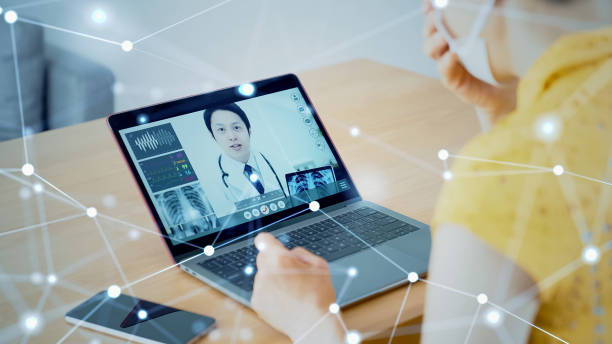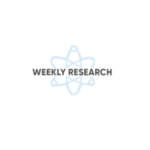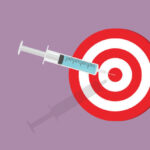Remote patient monitoring (RPM) software companies offer diverse solutions. Some may offer a complete suite of RPM services in addition to RPM software, while others may collaborate or outsource some services. Their variations often stem from their strengths in specific RPM components. For instance, some excel in data analytics, offering in-depth insights into patient health, while others may focus on user-friendly interfaces for patient engagement.
Telehealth capabilities, device integration, and data security are also areas where these companies can differ. When choosing an RPM software provider, aligning your selection with your healthcare organization’s specific needs and priorities is essential to ensure an optimal fit for your requirements.
With all of the remote patient monitoring software companies available, how do you choose the best one for your patient population? In this blog post, we will answer that question and these questions below.
- What is remote patient monitoring software, and how does it work?
- What are the features and benefits of RPM software?
- What do remote patient monitoring software companies do, and how do they differ from each other?
- How do I select a remote patient monitoring software company?
- What are some of the best RPM software programs available?
What is Remote Patient Monitoring Software, and How Does It Work?
Remote patient monitoring technology uses devices such as blood pressure monitors, blood glucose meters, pulse oximeters, peak flow meters, thermometers, digital scales, and more. RPM can help improve patient outcomes, reduce healthcare costs, and enhance patient satisfaction and engagement. Remote patient monitoring software is a software application that enables healthcare providers to collect, store, analyze, and share data from their patients’ RPM devices remotely.
RPM software connects patients’ devices to a secure cloud-based platform via wireless or cellular networks. The platform then uses data aggregation, processes it, and sends it to the healthcare providers’ dashboard or electronic health record (EHR) system. The healthcare providers can then access the data anytime and anywhere, using their computers or mobile devices. I
Some RPM software companies integrate alerts, reminders, feedback, and provide education to the patients and their caregivers. In addition, RPM software can work to integrate with other software applications, such as telehealth, chronic care management, care coordination, analytics, and billing. This can help create a comprehensive and seamless care delivery model for the patients and the providers.
What are the Features and Benefits of RPM Software?
RPM software can offer various features and benefits for patients and healthcare providers. Some of the standard features include:
Device Compatibility
The software can support various devices from different manufacturers and vendors, such as blood pressure monitors, glucose meters, pulse oximeters, weight scales, thermometers, etc. The software can also support wearable devices like smartwatches, fitness trackers, etc.
Data Collection
The software can collect various data types from remote monitoring devices, such as vital signs, symptoms, medication adherence, activity levels, sleep quality, etc. The software can also collect patient-reported outcomes (PROs), such as pain scores, mood ratings, quality of life scores, etc.
Data Analysis
The software can use artificial intelligence (AI), machine learning (ML), or other algorithms to detect trends, patterns, anomalies, or risks. The software can also generate reports, charts, graphs, or dashboards to visualize the data and provide insights.
Data Sharing
The software can share the data with healthcare providers and other authorized parties securely and in real-time. The software can also integrate with EHR systems or other platforms to facilitate data exchange and interoperability.
Alerts and Notifications
The software can send alerts and notifications to healthcare providers or patients when certain thresholds or criteria are met or exceeded. For example, the software can alert the provider when a patient’s blood pressure is too high or too low or when a patient misses a medication dose. Additionally, the software can notify the patient when it is time to take a measurement or medication or contact their provider.
Feedback and education: The software can provide patient feedback and education based on their data and goals. For example, the software can give tips on improving blood pressure or glucose levels or managing chronic conditions. The software can also provide educational materials or videos on nutrition, exercise, stress management, etc.
Some of the expected benefits of remote patient monitoring software include:
Improved Patient Outcomes
Remote patient monitoring software can help improve patient outcomes by enabling early detection and intervention of potential problems, reducing hospitalizations and readmissions, enhancing medication adherence and compliance, and improving chronic disease management.
Reduced Healthcare Costs and Increased Revenue
Remote patient monitoring software can help reduce healthcare costs by decreasing unnecessary visits and tests and lowering transportation expenses. In addition, healthcare providers benefit by optimizing resource utilization, medical team workflow and increasing reimbursement opportunities (ROI).
Enhanced Patient Satisfaction and Engagement
Remote patient monitoring software can help enhance patient satisfaction and engagement by providing convenience and comfort, empowering patients to take charge of their health. Additionally, RPM software facilitates communication and trust with providers and improves quality of life.
What do Remote Patient Monitoring Software Companies do; How do They Differ?
Remote patient monitoring software companies are the entities that develop, market, sell, and support remote patient monitoring software solutions. They can vary in size, scope, focus, features, pricing, and customer service.
Some of the factors that can differentiate remote patient monitoring software companies from each other include the following:
- Target market: Some remote patient monitoring software companies may target specific segments of the healthcare market, such as primary care, cardiology, diabetes, oncology, etc. Others may offer solutions for a broader range of specialties and conditions.
- Device integration: Some remote patient monitoring software companies may provide their own devices or partner with specific device manufacturers or vendors. Others may offer device-agnostic solutions that can work with any device or brand.
- Software integration: Some remote patient monitoring software companies may offer standalone solutions that do not require integration with other software platforms. Others may provide solutions by integrating EHR systems or other applications, such as telehealth, chronic care management, care coordination, analytics, and billing.
- Data security: Some remote patient monitoring software companies may have higher standards and certifications for data security and privacy, such as HIPAA compliance, encryption, authentication, etc. Others may have lower or less transparent levels of data protection and governance.
- Customer support: Some remote patient monitoring software companies may provide better customer support and service, such as 24/7 availability, dedicated account managers, training and education, etc. Others may have limited or poor customer support and service.
Remote Patient Monitoring Software Companies – And How to Choose
Choosing a remote patient monitoring software company can be challenging and complex. There are many factors to consider and evaluate before making a final choice. Here are some steps and tips to help you choose from an array of remote patient monitoring software company that suit your needs and goals:
- Define your needs and goals: The first step is to define your needs and goals using remote patient monitoring software. What are the problems or challenges you want to solve or address? What are the features or functions you need or prefer? What are the budget constraints that you have or face?
- Research your options: The next step is to research your options for remote patient monitoring software companies. You can use various sources of information, such as online reviews, ratings, testimonials, case studies, demos, free trials, etc. You can also ask for referrals or recommendations from your peers or colleagues who have used or are using remote patient monitoring software.
- Compare and contrast: The third step is to compare and contrast the different remote patient monitoring software companies based on the criteria that matter to you. You can use a matrix or a table to list the pros and cons of each option. You can also use a scoring system or a ranking method to weigh the importance of each criterion and assign scores or ranks to each option.
- Make a decision: Based on your analysis and evaluation, the final step is to decide. You can choose the option with the highest score or rank or best meets your needs and goals. You can also consider factors like intuition, gut feeling, or personal preference.
What are Some of the Best Remote Patient Monitoring Software Programs Available in the Market?
There are many remote patient monitoring software programs available in the market today. However, some stand out from the rest due to their features, benefits, reputation, and customer satisfaction. Before deciding, evaluating and comparing different options based on your specific needs, budget, and goals is essential. Consider device compatibility, data analysis capabilities, integration with other systems, and customer support when choosing the best remote patient monitoring software company for your healthcare practice.
Tenovi Remote Patient Monitoring for RPM Software Companies
Whether your healthcare partners are interested in adopting remote patient monitoring to increase patient engagement, create a more efficient workflow, or increase revenue, Tenovi can help you find the best remote patient monitoring device solution. Choose from a growing list of Tenovi and partner FDA-cleared RPM devices. Book a free demo today.






